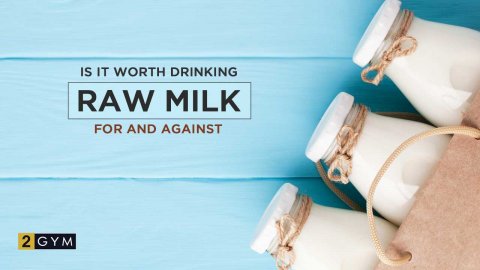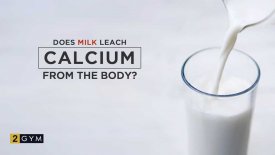Raw Milk: Benefit or Risk?
In recent decades, controversy has surrounded raw milk. Advocates claim that it has numerous health benefits, while opponents point out the risks associated with its consumption.
Advocates of Raw Milk
- Cite research showing that raw milk contains more vitamins, minerals, and enzymes than pasteurized milk.
- Claim that raw milk can help improve digestion, boost immunity, and reduce the risk of allergies.
- Support farmers who produce and sell raw milk.
Opponents of Raw Milk
- Point out that raw milk may contain dangerous bacteria such as Salmonella and E. coli.
- Note that pasteurization kills these bacteria and makes milk safer.
- Support legislative restrictions on the sale of raw milk.
Article Objectives
- Provide objective information about the benefits and risks of raw milk.
- Help people make informed choices about whether to consume raw milk.
Nutritional Value of Raw Milk: Comparison with Pasteurized
Raw milk is milk obtained from an animal without thermal processing (pasteurization, homogenization, ultrafiltration).
Pasteurized milk is milk heated to a certain temperature to destroy pathogenic bacteria.
Nutritional Value Comparison
| Nutrient | Raw Milk | Pasteurized Milk |
|---|---|---|
| Vitamins | B1, B2, B3, B5, B6, B12, C, D, E, K | B1, B2, B3, B5, B6, B12 |
| Minerals | Calcium, Phosphorus, Potassium, Magnesium, Zinc, Selenium | Calcium, Phosphorus, Potassium, Magnesium, Zinc, Selenium |
| Enzymes | Lactase, Lipase, Protease, Amylase | ↓ Decrease |
| Proteins | Casein, Whey Protein | ↓ Decrease |
| Fatty Acids | Omega-3, Omega-6 | ↓ Decrease |
Destruction of Nutrients
Destruction and assimilation of nutrients during pasteurization
| Vitamin C | Destroyed by 10-20%. Significant destruction of vitamins occurs during storage of pasteurized and sterilized milk, especially vitamin C: by the second day of storage, its losses amount to 45%, and by the third day — 75% |
| Calcium | The decrease in the value of whole milk as a result of thermal processing is also explained by the destruction of calcium salts, so necessary for the health of our teeth, prevention of osteoporosis. The calcium-magnesium-carbon-phosphorus complex breaks down into its components. At least 3 compounds from them – calcium phosphate, magnesium phosphate, and calcium carbonate – are practically insoluble, and their usefulness is completely lost. During heating of milk, soluble calcium turns into a colloidal state and reduces the milk's pH. |
| Folate | Deactivated during pasteurization |
| Vitamin B12 | Subjected to some degree of destruction during short-term pasteurization (heating to 72-74 °C for 10 to 20 seconds) |
| Vitamin B6 | |
| Vitamin B2 | |
| Vitamin A | Beta-lactoglobulin, a heat-sensitive milk protein, increases the absorption of vitamin A in the intestine. Vitamin A is destroyed during heating. |
| Vitamin D | Present in milk due to lactoglobulins, pasteurization reduces its absorption by half |
| Iron | Lactoferrin, which promotes iron absorption, is destroyed during pasteurization. Children fed pasteurized milk are prone to anemia. |
| Minerals | Bind to proteins, inactivated by pasteurization; Lactobacilli enhance mineral absorption, but they perish during pasteurization |
Proteins in Raw Milk
The main fractions of milk proteins are casein (82% of total protein content), whey, and whey proteins (18% of total protein content). Casein is thermostable and does not break down during industrial processing.
Whey protein is a group of a dozen proteins, including the main milk allergen β-lactoglobulin, α-lactalbumin, serum albumin, as well as immunoglobulins, lactoferrin, enzymes, and cytokines such as TGF-β and IL-10.
Heating can alter the physicochemical characteristics of these proteins and affect their biological impact. These biologically active compounds can influence the immune system and prevent allergic reactions.
Potential Benefits of Raw Milk
- Immune Boost Due to the presence of vitamins, minerals, enzymes, and antibodies.
- Improved Digestion Due to lactase, which helps digest lactose.
- Reduced Allergy Risk Due to probiotics that may influence gut microbiota.
- Stronger Bones and Teeth Due to the presence of calcium, phosphorus, and vitamin D.
Research and Scientific Publications on the Benefits of Raw Milk
One aspect that attracts researchers' attention is the vitamin composition of raw milk. It contains more vitamins and minerals than pasteurized milk.
Recent research confirms that raw milk contains higher levels of certain vitamins, such as vitamin C and vitamin B12, compared to pasteurized milk.
In addition to vitamins, raw milk also contains enzymes that may have a favorable impact on digestion and overall health.
For example, enzymes such as lactase and lipase aid in the breakdown of lactose and fats, which can ease digestion for people with certain food intolerances.
One key argument in favor of raw milk is its impact on immunity and allergies.
Some studies suggest that consuming raw milk may contribute to strengthening the immune system and reducing the risk of allergic reactions in some individuals.
-
Transforming growth factor-β1 is elevated in unpasteurized cow’s milk
Authors: Diego G. Peroni, Giorgio L. Piacentini, Alessandro Bodini, Roberta Pigozzi, Attilio L. Boner
Farm raw milk contains high levels of transforming growth factor-β₁, which may protect against allergic diseases.
The results show that TGF-β 1 levels are significantly higher in raw unpasteurized cow's milk and that domestic (boiling) or industrial (pasteurization or microfiltration) manipulations of raw cow's milk can significantly reduce the content of this cytokine.
All tested mixtures of cow's milk had undetectable levels of TGF-β 1.
Consumption of unpasteurized milk was associated with lower prevalence of atopy. Not only microbial load, but also fatty acids and cytokines such as transforming growth factor-β 1 (TGF-β 1 ) may play a role in the effect of unpasteurized milk.
https://onlinelibrary.wiley.com/doi/10.1111/j.1399-3038.2008.00737.x#b2
-
Can farm milk consumption prevent allergic diseases?
Authors: C Braun-Fahrländer, E von Mutius
There is increasing epidemiological evidence suggesting that consumption of raw cow's milk does not increase but rather reduces the risk of asthma, hay fever, and atopic sensitization.
The article reviews epidemiological literature and discusses components of raw milk potentially responsible for such protection. The focus is on the role of bacteria in raw milk, fatty acid profiles, whey proteins, and, finally, the role of allergens in milk.Epidemiological data convincingly demonstrate a protective role of consuming raw cow's milk in the development of asthma, hay fever, and atopic sensitization.
-
Raw cow's milk consumption and allergic diseases - The potential role of bioactive whey proteins
Authors: Suzanne Abbring, Gert Hols, Johan Garssen
In recent decades, the prevalence of allergic diseases has significantly increased in Western countries.
This increase is often attributed to the loss of rural living conditions and associated changes in diet and lifestyle.
Consumption of raw, unprocessed cow's milk appears to be one of the factors contributing to this protective effect.
Recent data indeed show a reverse relationship between raw cow's milk consumption and the development of asthma and allergies
-
Loss of allergy-protective capacity of raw cow's milk after heat treatment coincides with loss of immunologically active whey proteins
Authors: Suzanne Abbring, Ling Xiong, Mara A P Diks, Ton Baars, Johan Garssen, Kasper Hettinga, Betty C A M van Esch
It has been shown that the allergy-protective capacity of raw cow's milk disappears after heat treatment.
The source of this allergy-protective effect is often considered to be the thermosensitive fraction of whey protein in raw milk, but a direct connection between these proteins and protection against allergic diseases is lacking.
Thus, this study aimed to investigate the mechanism linking heat-induced damage to whey proteins and the development of allergies.
This study demonstrates that immunologically active whey proteins, which are crucial for the allergy-protective capacity of raw cow's milk, are destroyed at temperatures around 65°C
-
Suppression of Food Allergic Symptoms by Raw Cow's Milk in Mice is Retained after Skimming but Abolished after Heating the Milk-A Promising Contribution of Alkaline Phosphatase
Authors: Suzanne Abbring, Joseph Thomas Ryan, Mara A P Diks, Gert Hols, Johan Garssen, Betty C A M van Esch
It was demonstrated that raw cow's milk suppresses allergic symptoms in a mouse model of food allergy.
Raw milk suppressed food allergic symptoms, as evidenced by reduced acute allergic skin reaction and low levels of OVA-specific IgE and Th2-related cytokines.
Pasteurized milk did not exert a protective effect. Thermosensitive components are responsible for the anti-allergic action of raw cow's milk.
-
Raw milk kefir: microbiota, bioactive peptides, and immune modulation
Authors: Ton Baars, Betty van Esch, Luuk van Ooijen, Zuomin Zhang, Pieter Dekker
The aim of this study is to characterize the microbiota and peptide composition of kefir from raw milk, as well as to consider the potential anti-allergic effects of kefir from raw milk using validated food allergy research models.
Heating the milk negatively affected the diversity of the kefir peptide composition. Only kefir from raw milk suppressed acute allergic skin reactions to the food allergen ovalbumin in sensitized mice.
These effects coincided with differences in the T-cell compartment: lower percentages of activated Th1 cells and IFNγ production after treatment with kefir prepared from heated milk.
-
The results of this study indicate the special properties of raw milk kefir that may contribute to its additional health benefits.
-
Inverse association of farm milk consumption with asthma and allergy in rural and suburban populations across Europe
Authors: M Waser, K B Michels, C Bieli, H Flöistrup, G Pershagen, E von Mutius, M Ege, J Riedler, D Schram-Bijkerk, B Brunekreef, M van Hage, R Lauener, C Braun-Fahrländer; PARSIFAL Study team
Lifetime consumption of farm milk showed a statistically significant inverse association with asthma.
The study results indicate that farm milk consumption may provide protection against asthma and allergies.
A deeper understanding of the protective components of farm milk and a better understanding of the biological mechanisms underlying this association are the basis for developing a safe product for prevention.
-
Exosomes of pasteurized milk: potential pathogens of Western diseases
Authors: Bodo C Melnik, Gerd Schmitz
Epidemiological and interpretational data presented in this review indicate that continuous exposure to exosomes from pasteurized milk may pose a significant risk for the development of civilization-related chronic diseases.
Among these diseases are: obesity, type 2 diabetes, osteoporosis, common types of cancer, as well as Parkinson's disease.
Exosomes from pasteurized milk may represent novel pathogens that should not enter the human food chain.
-
Raw Cow’s Milk and Its Protective Effect on Allergies and Asthma
Author: Barbara Sozańska
Cow's and breast milk contain a significant amount of exosomal miRNAs, which can be transferred to infants to stimulate immune regulatory functions.
Raw cow's milk contains a large amount of bioactive exosomal miRNAs. Pasteurization reduces its level. Boiling milk leads to complete degradation of miRNAs.
Milk exosomes are crucial for the maturation of the immune system in the postnatal period and early childhood.
-
Milk processing increases the allergenicity of cow’s milk—Preclinical evidence supported by a human proof-of-concept provocation pilot
Authors: Suzanne Abbring, Daniel Kusche, Thomas C. Roos, Mara A. P. Diks, Gert Hols, Johan Garssen, Ton Baars, Betty C. A. M. van Esch
This study shows that raw (unprocessed) cow's milk and native whey proteins have lower allergenicity than their processed counterparts.
Preclinical data combined with a human proof-of-concept experiment provide evidence that milk processing negatively affects the allergenicity of milk.
These facts underscore the importance of further research in the field of nutrition and health, as well as the need to pay attention to the potential benefits of raw milk when used correctly.
Risks and Caution
Despite its benefits, there are considered to be risks associated with the consumption of raw milk.
One of the most serious risks is the possibility of infection with pathogenic bacteria, such as Salmonella and E. coli, which can lead to serious illnesses, especially in people with weakened immune systems, children, and pregnant women.
However, it should be understood that this is not an issue with raw milk itself but rather a problem related to sanitary standards for milk production, storage, and transportation. If pasteurized milk is stored or transported with deviations from sanitary standards, similar risks will also be present.
Access to Raw Milk
Raw milk is a product that has not undergone pasteurization, preserving its natural composition. There are debates surrounding raw milk involving ethical and legal aspects, such as access to the product, consumer rights, and farmer rights.
Legislative Restrictions
In different countries, legislation regarding raw milk varies. In some countries, such as the USA, its sale is allowed without restrictions.
In others, like Russia, mandatory pasteurization is required. In the EU, there are restrictions on the sale of raw milk, but they are less stringent than in Russia.
Consumer Rights: Consumers have the right to access information about products, including raw milk. This right is exercised through labeling, which should provide information about the product, its origin, storage conditions, and potential risks.
Farmer Rights: Farmers have the right to produce and sell raw milk, but they must comply with sanitary standards and storage rules, as well as inform consumers about the risks associated with its consumption.
Direct Sales: Direct sales of raw milk by farmers to consumers are an important aspect, allowing farmers to interact directly with customers and provide access to fresh products.
Consumer Information: Informing consumers about the risks and benefits of raw milk is a crucial aspect. Farmers, sellers, and government agencies should provide accurate information so that consumers can make informed choices.
Ethical Aspects
Supporters of Raw Milk: Emphasize its naturalness and potential health benefits. Criticize pasteurization for destroying nutrients and enzymes. Believe that consumers should have the right to choose.
Opponents of Raw Milk: Focus on the risks associated with bacterial contamination. Support pasteurization as a method of ensuring safety. Express concern about unscrupulous farmers who do not adhere to sanitary standards.
Legal Aspects
Food Safety Legislation: Regulates the production, sale, and labeling of raw milk. Should balance risks and consumer rights.
Property Rights: Farmers have the right to own and dispose of their product. The state may regulate the production and sale of raw milk, but cannot completely prohibit it.
Conclusion
The ethical and legal aspects of raw milk are a multifaceted issue that requires careful consideration. It is important to find a balance between risks and benefits, consumer rights and farmer rights. To achieve this, the following are necessary:
- Open dialogue among stakeholders: Farmers, consumers, scientists, and government representatives.
- Reliable scientific research: To assess the risks and benefits of raw milk.
- Balanced legislation: Ensuring product safety without infringing on consumer and farmer rights.
- Effective information system: Allowing consumers to make informed choices. Only with a comprehensive approach can a solution be found that takes into account the interests of all parties involved.

















Log in with ( Sign Up ? )
or post as a guest
Be the first to comment.